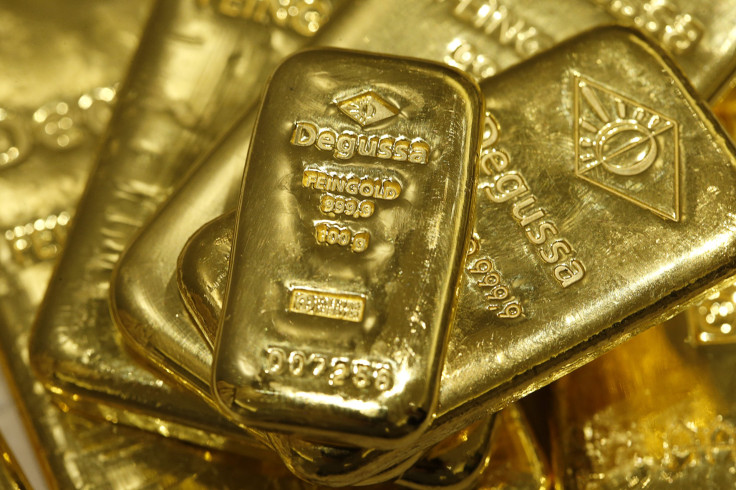Gold Investment Fund (ETF) Outflows Are Heavy In October, As Prices Test 'Fragile' Floor

Gold flowed heavily out of investment funds in October, with outflows greater than those of August and September combined, just as gold prices almost reached a “fragile price floor” of $1,300 per ounce, according to a Barclays PLC (LON:BARC) research note from Monday.
Net redemptions from gold-backed exchange-traded products (ETPs) hit 48 metric tons in October, with the total metal held in trust reaching a new low since May 2010.
“Firmer prices have not seen a stabilization in ETP holdings yet,” the Barclays analysts wrote. For the year to date, 752 metric tons of gold has left these funds, with heavy outflows during late spring and early summer.
The precious metal came close to a key psychological low of $1,300 per ounce on Friday, and opened at $1,313 per ounce on Monday in New York.
Gold held in the world’s largest gold-backed investment fund, SPDR GLD, hit 866 tons as the market closed last Friday. The last time holdings hit that level was February 2009, according to the fund’s website.
SPDR GLD holdings were consistently above 1,000 tons from February 2009 until June 2013. The fund has seen slow but steady outflows since June 2013.
Kevin Quigg, a strategist for the fund, told International Business Times in a phone interview on Oct. 25 that political uncertainty relating to the debt ceiling could help boost gold prices later in 2014.
“What we’ve seen in the gold market recently, as opposed to uncertainty cleared altogether, is that more uncertainty was created,” Quigg said. “It was not totally cleared away.”
Gold investors, however, had a mixed reaction to the debt limit debate, with little price upswings despite political deadlock in Washington. Analysts attributed this to complacency in the markets, which were confident that lawmakers would strike a last-minute deal.
Many investors are using gold tactically, buying and selling according to immediate price movements, instead of holding gold as a long-term asset, Quigg said.
He declined to comment much on the steep one-day drop in GLD holdings on Oct. 21, when holdings fell by 10 tons, the largest one-day decline since early July.
“It’s hard to ascertain where that comes from,” Quigg said. “It’s either several investors consolidating at once or one larger move. Oftentimes it’s very difficult for us to tell.”
At a New York media conference, World Gold Council executives, who help oversee the GLD fund, added that fund outflows often paint an incomplete picture of gold markets.
“You can’t look just at flows and extrapolate from that, necessarily, that investors are selling,” said council investment director Kevin Feldman last week.
Feldman said funds like SPDR GLD may have reduced inventory for technical reasons, because demand for their shares has come down, especially after tactical investors in Europe and the U.S. traded less in gold futures and fund products.
In a recent report, the council stressed gold’s role in reducing overall risk in an investment portfolio, but acknowledged its price volatility.
“In itself, gold is not a low-volatility asset,” the report read.
Gold prices have fallen almost 20 percent since the start of the year. There’s considerable uncertainty about where gold prices will end up come Dec. 31 and into 2014.
A strengthening dollar and a weak euro could take gold down to $1,300 per ounce shortly, wrote HSBC Holdings PLC (LON:HSBA) analyst James Steel in a research note last Friday.
The outflows in exchange-traded products come after a tough third quarter for such funds, which collectively saw billions in outflows.
“The dollar’s strength against the euro, the uptick in 10-year U.S. Treasuries, and the firmer equity markets set a difficult environment for gold, despite delayed expectations for Fed tapering,” wrote Barclays analysts on Monday.
© Copyright IBTimes 2024. All rights reserved.





















